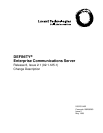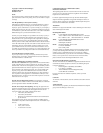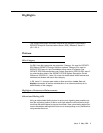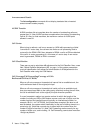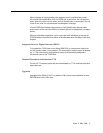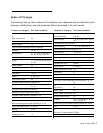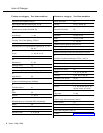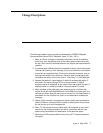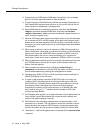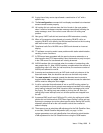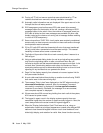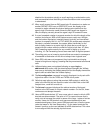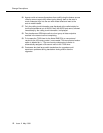
Issue 2 May 1998 9
20. A goto time-of-day vector step allowed a combination of “all” with a
specific day.
21. The list configuration command did not display translated but uninserted
announcement boards properly.
22. LAI routing did not continue down the list of trunks in the route pattern
when it received a release complete message immediately following the
setup message, even if the correct cause value for LAI routing was
present.
23. Non-group II MFC calls did not terminate at VDN extensions correctly.
24. When a Conversant port transferred an incoming R2-MFC call to an
outgoing R2-MFC trunk blindly, the ANI that was received on the incoming
side was not sent out to the outgoing side.
25. Transferred calls Out of AUDIX over a QSIG trunk showed an incorrect
display.
26. TTI software corruption would cause problems with station administration,
resulting in error conditions.
27. A CDR record was generated with the service observer extension on a
blind transfer when ITCS was enabled. Now, the transfer-to party is output
in the CDR record if a transferred call is being observed.
28. AUDIX transfers did not complete when the number of outstanding calls
was greater than 31. Now, AUDIX transfers complete when the number of
outstanding calls is 32. Also, for Intel machines, the maximum number of
AUDIX ports allowed is now 64.
29. A remote service observer using an AVD trunk could only observe in the
listen-talk mode. Now, the observer can also use the listen-only mode.
30. The reset system 2 command caused the attendant service mode to
toggle between day and night. Now, this command causes the attendant
service mode to always be set to night.
31. A call to a principal that redirected off-net on an ARS routing pattern for
which no preferences (trunk groups) were assigned resulted in the calling
party hearing intercept tone while a previous local coverage point could
be ringing. The calling party was unable to pick up the call. Now, the
calling party hears intercept tone, but all other parties are dropped from
the call.
32. A personal EAS (a call to an EAS login ID in which the calling and called
parties did not both have their COR Direct Agent Calling? option set to y)
that went to coverage due to the called agent's station having SAC active,
showed f rather than s for the call's reason code at the covered-to
station's display.
33. There was no way to administer dB adjustment for the Call Classifier. Now,
a new field, Global Classifier Adjustment (dB), on page 1 of the
system-parameters ocm-call-classification form allows for administration
of dB adjustment for the Call Classifier when using the OCM feature.



